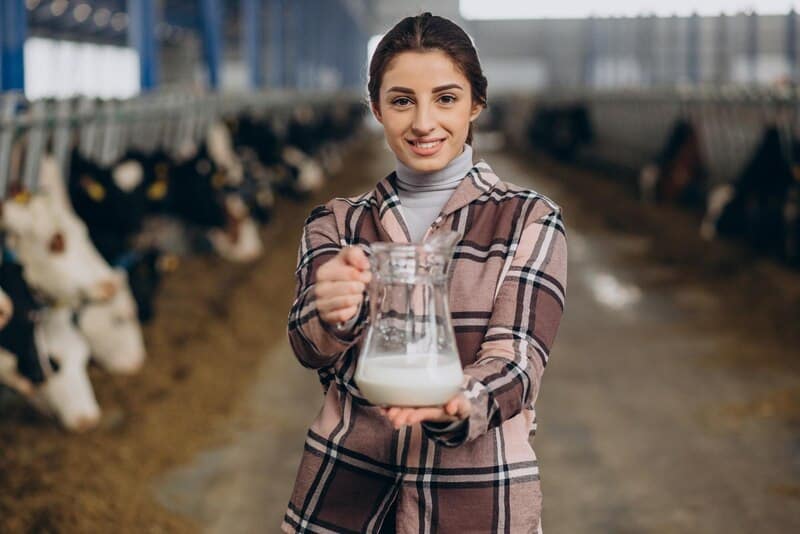As more people explore for plant-based alternatives that are healthier and friendlier to the environment, almond milk has emerged as a popular substitute for cow’s milk in recent years. Almond milk is a plant-based product that satisfies both of these criteria. Yet, there is considerable disagreement as to whether or not almond milk is genuinely beneficial to the environment or whether or if it has some unintended consequences that are being ignored. In this piece, we will investigate the effect that drinking almond milk has on the environment, compare it to the influence that drinking cow’s milk has, and evaluate whether or not it is possible to consume almond milk in a sustainable manner.

How do you define almond milk?
Almond milk is a plant-based alternative to cow’s milk that is produced by blending together almonds, water, and occasionally other components such as sweeteners or thickeners. Almonds are the primary ingredient in almond milk. Typically, the almonds are first submerged in water for an entire night, then blended together with new water, and finally filtered to eliminate any particles. The resulting liquid is strained, and almond milk is packaged and marketed under that name.
Those who are lactose intolerant or have an allergy to milk can drink almond milk without worry because it does not include any dairy products. This has contributed to almond milk’s meteoric rise in popularity. Moreover, it contains fewer calories and less fat than cow’s milk, and some individuals consider it to be a more flavorful alternative.

The environment and dairy products.
It is necessary to gain an understanding of the effect that the manufacturing of dairy products has on the natural environment before we proceed with our discussion on the environmental impact of almond milk. Since digestion in cows results in the production of methane, dairy farming is a significant contributor to the emissions of greenhouse gases. It is predicted that methane, a potent greenhouse gas, has a warming effect that is 28 times larger than carbon dioxide during a time frame of 100 years. Carbon dioxide is the most well-known greenhouse gas.
Dairy production is a major contributor to several environmental problems, including greenhouse gas emissions, water pollution, and forest loss. The massive volumes of dung that cows produce have the potential to contaminate water supplies, and the clearance of land for grazing and the manufacture of feed can contribute to the destruction of habitat and the loss of trees.

The impact of almond milk on the surroundings
How, therefore, does the environmental impact of drinking almond milk compare to that of drinking milk from cows? The answer is not simple because there are many different things to take into account in the equation.
The quantity of water that is needed to cultivate almonds is one of the primary causes for concern regarding almond milk. The state of California is a state that is prone to droughts, and almond cultivation has been blamed for contributing to the state’s worsening water shortages. California is the state that produces 80% of the world’s almonds. A single almond requires approximately 1.1 gallons of water to manufacture, which implies that in order to make one gallon of almond milk, you will need approximately 110 almonds in addition to 110 gallons of water. This is a considerable amount of water that is well in excess of what is necessary to create one gallon of cow’s milk, which requires approximately 30 gallons of water.
When it comes to the amount of water required to produce almond milk, however, not all brands are made equal. This point should not be overlooked. Several manufacturers of almond milk have begun to use water-saving practices, such as the use of drip irrigation or the cultivation of almond cultivars that are more resistant to drought. In addition, almond milk can be produced from almonds that have been grown in areas that have access to a greater quantity of water, such as Spain or Italy. [Citation needed]
The use of pesticides in almond production is yet another factor that raises concerns about almond milk. Conventional almond cultivation often entails the use of pesticides in addition to herbicides since almonds are a crop that is vulnerable to being attacked by various insects and illnesses. On the other hand, there are other choices that are organic and don’t include any pesticides.
When comparing almond milk to cow’s milk, transportation is an additional aspect to take into consideration. It is common practice in California to produce almond milk, which is then shipped to other regions of the world, which can result in considerable emissions of greenhouse gases due to the transportation of the product. On the other hand, milk from cows is often produced in locations that are closer to where it will be consumed.
In general, the impact that almond milk has on the environment is contingent upon a variety of elements, such as the region in which the almonds are grown, the method by which they are cultivated, as well as the manner in which the milk is manufactured and distributed.
Is it possible to drink almond milk in a sustainable way?
Is it feasible to consume almond milk in a way that is environmentally friendly, considering the issues regarding the amount of water used and the pesticides that are used in almond farming?








